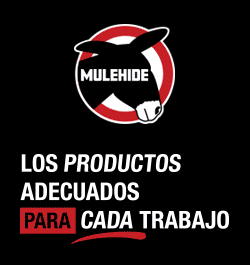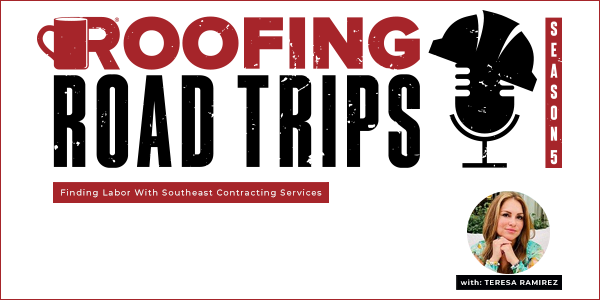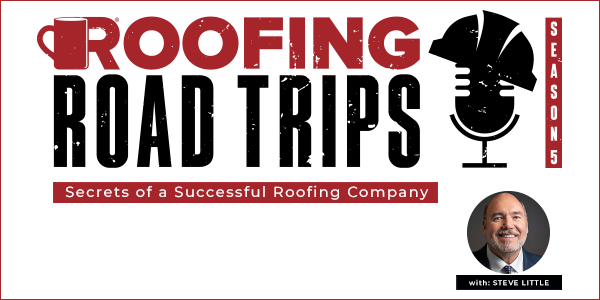Roofing Road Trips with Heidi-Zach Stopyro- PODCAST TRANSCRIPTION

Editor's note: The following is the transcript of an interview with Zach Stopyro from DaVinci Roofscapes. You can read the interview below or listen to the podcast here.
Heidi Ellsworth: Hello and welcome to Roofing Road Trips with Heidi, and today I am so excited to introduce Zach Stopyro with DaVinci Roofscapes. This is Heidi Ellsworth and I'm an RCS partner. And like I said, we are going to be visiting today about one of my favorite subjects about how our roofing products deal with performance testing. And I've been involved in this so long, but to talk to somebody who is in technical services, who gets it. Zach, welcome to the show.
Zach Stopyro: Thanks, Heidi, for having me today and hopefully I can answer some of these questions for you and help our listeners and get this taken care of.
Heidi Ellsworth: Well, I'm excited about it because, in all honesty, ever since I started close to 30 years ago in the roofing industry, one of my favorite things has been when you get to go see all that testing in the labs, whether it's fire or wind or hail. But I think a lot of people just don't really know how much goes into that. Today will be a really good opportunity to share that and for people to learn a little bit from an expert like yourself. But before we start down that road, I would love for you to share a little bit of your history, Zach, in the roofing industry. I know we've talked before, and you and I have kind of a similar amount of time in the industry, and also share a little bit about DaVinci.
Zach Stopyro: Sure. Thank you. I've been in roofing for over 30 plus years, started as a teenager with a family-run company. And I started out as a labor or a grounds guy cleaning up the ground and tearing off roofing; and ended up over the years or throughout the years, all the way up to a co-owner of a company, head of technical services for various manufacturers and installation teams and companies on the contracting end. I've installed roofing of all types all over the world and one of the things that I've done more of in the last 10 to 15 years is help manufacturers specifically improve existing specialty products for the installations of those products. And that's kind of how I ended up with DaVinci years ago is they were releasing a newer product that needed to be released to contractors and it was something of a new design. DaVinci has been around 20 plus years, but this product was unique in its installation and how it was all put together. It was just something that they wanted to have a little more assistance in that area. They are the leader or DaVinci is the leader in this category, in the whole polymer or synthetic end of roofing. We have various product lines and very strong warranties. They're the strongest in the industry. That kind of makes us a stand out from some other companies or other products in that high-end industry where they just have one or two products or they're very, very specialized. We actually kind of go out and cover a lot of different realms and price points.
Heidi Ellsworth: That makes your product testing even more important than ever when you are covering such a wide range. And I know, I've been very involved in the polymer and synthetic specialty products, so I have huge respect for what you have all done at DaVinci. Before we kind of get into that actual product testing, and for some people they may all know this, but I think there's a lot of people who don't really know or understand where even products are tested. Can you kind of share some of the labs around the country or even where do people take products to get tested and get certified?
Zach Stopyro: Sure. Amazingly these days, everybody goes online and kind of searches. Of course, if you were trying to test a roofing or construction product, you kind of do those online searches. But over the time, we have worked with a couple labs that have just shown the best customer service and we've had great results with, like QAI or Intertek, PRI, Roofing Technologies, and even UL Laboratories or Underwriters Laboratories. There's hundreds of labs throughout the country and throughout the world that do different types of testing, some that even specialize in specific types of building products. However, the best thing to do is find places, if you can find them close to where you are that's great because you can actually go see a lot of that testing. And if you get the chance to do that, it's amazing. I mean you can't a lot of times appreciate the testing until you've seen it. And even with seeing the videos and things online that we do in bits and pieces or even other companies, it's a totally different atmosphere thing to actually go to one of these labs and see the different fire and wind testing that's out there.
Heidi Ellsworth: I agree. It is so amazing to watch that. I've seen pretty much all of them and I'm just always like, "Wow, this is so important that our products and our systems go through this." So that we know we're safe when they're covering our heads, right, and they're protecting our buildings and our families. But they aren't testing just a single tile or a single shake, they're testing the whole system. Can you kind of share a little bit about the importance of that system in testing and how that kind of works?
Zach Stopyro: In terms of roofing or just about any of the building products that are out there, whether it be siding, roofing, any of the exterior items on a home, and even interior for that matter, it is always or at least most of the time about the system. You could buy the best shingle or the best tile out there, and if it's not put on with the correct fasteners and the correct underlayments and things, those things can still break down or not perform as well as the main product, if you will, for that installation. And a material is only as good as its decking, it's fasteners, underlayment and all those various things. When we're speaking of fire ratings or specifications, it's always based on the system, not just one specific product. And if you don't test or don't install that specific system, if you're missing a fastener or missing an underlayment or missing a certain thing that was tested, then you're of course not going to get the specification or the rating that you're trying to get. And a lot of times, homeowners don't know that. Even for the most part, installers don't understand that. And it takes a lot of teaching from the top down to kind of let guys know, "Hey, it's very important that if we tell you to do this or do it this way, it's because that's how the system is specified and how it's actually rated," and we need to install it per the specifications to get those ratings.
Heidi Ellsworth: I know we have roofing contractors who are listening to this podcast today who, really it is a point of differentiation when they can go to a homeowner and say, "This is the system, this is why it protects you and here's the testing." I think that makes such a difference because we know there are some people who will try to not follow those systems, and then you're just not as safe.
Zach Stopyro: Exactly. And especially when you get up to premium products and those higher-end products, people are not buying that end of the atmosphere or that end of building products because they just want the cheapest. They're looking for a specific look or specific type of product and they also want a specific performance or performance rating. And able to show that or tell that you may be a little bit more expensive as a contractor, but if you're selling your knowledge and how you do things and why you are a little more money because you actually install things per specific specifications, it makes a lot more sense. And a lot of people that are educated and have taken the time to look into premium products are going to really appreciate that, and a lot of times it's worth paying.
Heidi Ellsworth: Yeah, that is so true. You get what you pay for and you also get by using good roofing contractors who understand the systems, licensed, all of that, you'll also get what you pay for on that side of it too. It all goes together. Well, Zach, one of the things... I live in the middle of Oregon, up in the Cascade Mountains and we're right in the middle of wildfire country. And so I kind of wanted to start out... I want to talk about all the different types of testing, but let's start out with fire testing. And maybe you could kind of share... I know there's a couple of different ways that they test for fire, you could share those with our listeners on just how they work, what they are and why they're important?
Zach Stopyro: Okay. I don't want to bore anybody. I'll kind of make these short but somewhat specific, so it kind of gives everybody an idea. But there's three tests that they do on sloped roofing or steep-slope roofing, and they help determine the resistance to fire. You have different classifications. You have a Class A, Class B Or Class C. You can also have an unclassified system, which just means that that system can either not pass into one of those groupings or resistances, or it's never been tested. You could have a system that could perform as well as a Class A, but it's never been tested as a system so there's no way to know for sure. There's nothing in writing so it can't be installed as a Class A system. Now in order to get those different system ratings, those specific systems are tested by those three ways. And those three tests are you have what's called a burning brand test, where the brand is almost like a block of wood, if you will, and those blocks of wood or those brands are different sizes. For a Class A, that brand is about 2000 grams. For Class B, it's only 500 grams, so about a quarter of what Class A is. And then Class C, it's multiple brands. I want to say it's either 10 or 15 of these very small but less than 10 grand brands. And they'll light these brands on flyer, and then place them on a deck that has the roofing system with the tiles or shingles and underlayments and everything applied on it. And what they're testing for is if burning debris were to land on the roof, would it burn through to the interior of the home? And so you have, basically, a big block and then smaller types of blocks that go down just to see where that'll pass. Of course, you want a Class A, it's the highest rating and that's really what you're looking for. Class C is if you were just getting almost like ashes blowing up on the roof, where a Class A test, you're passing a pretty big log, if you will, falling on that structure. Spread of flame, they'll actually take a flame that is applied to the structure and it's a positive uphill slope. It's usually at least a 412 pitch or greater. And they apply this flame, and for a Class A, that flame can only spread up the slope six feet or less. For a Class B, it's eight feet or less; and for Class C, it's up to 13 feet. Again, this is testing if flame were to be on the structure or applied to the structure from the outside of the building, how fast would fire engulf the roof? How fast would it climb up to the peak of the roof or engulf the entire roof? And again, Class A, you want is going to give you the lowest amount of spread; in Class C, the greatest. And then the last test is intermittent flame and this is just where they apply a flame to this same type of structure, these same type of roof builds and system builds, and they apply this flame for a different amount of cycles. For Class A, it's 15 cycles; for Class B, it's eight cycles; and for Class C, it's three cycles. Also the Class A and B tests are about a hundred degrees hotter, so it's a more intense flame plus more cycles. And they're doing that to see if a flame were to keep hitting the building, is it going to catch or is the roofing structure going to, what they call self-extinguish, where the building won't actually support the flame. It will die out and you're no longer going to have that flame continue.
Heidi Ellsworth: I love... And I don't think it's boring at all, but to hear about those different types of tests because when you're living in it, I mean, how often have we seen the pictures when there's one house standing in this whole burnout neighborhood. And you can look at the roof and it was able to combat the... Along with other things, but it was really able to combat the flying embers. And living in the mountains, boy, we're very aware of it. We are all Class A around here. But we know we- Oh, go ahead.
Zach Stopyro: Oh, I was just going to say, and that's one of those things. You and I had spoke about that before. If I lived in an area where Class A was a big deal, where it was something on the West Coast and areas where you have more wildfires and brush fires and those types of things, I would never go into a home to show someone roofing or siding or those types of materials without showing them videos of the testing. People see that online or on TV, see the wildfires and things like that. But if you could show someone that a 1400 degree flame, basically out of a flame thrower, is being blown at a roof material and show them the difference between a product that isn't tested and how quickly it burns up and can burn down to the interior of the home compared to a product that's a Class A system, I don't think price no longer is an issue. I hate to say that because people would say that price is always an issue. But I think at that point when you're in an area where that's a big deal, I think it kind of outweighs that price.
Heidi Ellsworth: Right. And it's important too because building codes. I mean besides just common sense of this is what you need to have but also building codes. What happens if you don't do that? And then inspectors come by, and eek, you're out of compliance. That's not good.
Zach Stopyro: No question.
Heidi Ellsworth: No question.
Zach Stopyro: No question at all. Your thing is it's one of those things you only want to do once. You don't want to have to do it more and more.
Heidi Ellsworth: Trust me, I know. I've been down that road. Okay, let's talk about wind then because I mean obviously we have the coastal areas, the hurricane seasons coming down. How do they test for wind?
Zach Stopyro: Yeah, so there's different wind tests out there. And I think what most people think of as a wind test, if you don't know about testing and testing of roofing products, it's what they call ASTM D3161, and it's a straight-line wind test. And for lack of better definition or explanation, it's basically a big wind fan or a big bladed fan that blows wind at a roofing structure for periods of up to two hours, and they'll turn that motor or that fan on to get speeds up to 110 miles an hour. They're basically checking if the roof is sealed down, if it's going to come up or if the seal is going to break, if you will. And if it does, when they stop the test, that the roofing will lay back down or fully lay back down within 20 minutes of the test being completed. It's more what people would think a wind test is. "Hey, we're going throw some wind at this roofing structure and see how it would negatively affect the roof or if the tiles are shingles and things are going to blow off." Now years back, they came up with a test which is a wind pressure test and there's various categories and names for it, UL 580, UL 1897 or TAS or TAS 125. These methods are pressure related, and they'll actually build a 10 by 10 roof structures that are put into or dealt with in pressure chambers. And it's more along the lines of things that people have heard about now with hurricanes and things like that with negative and positive pressure, and they do that again to rate the whole system. Even the decking in a lot of areas where they want to make sure. For example, in Florida, there's specific guidelines to how many fasteners are in your decking, how much the spacing is. It's not even just the underlayments in roofing, but it even goes down to the decking and how the decking is fastened to the home. And so a lot of that stuff, the testing has gotten a lot more severe and a lot more strict over the years just because of the storms we've had and the damage that we've seen down South.
Heidi Ellsworth: Yeah. And it's in places that people don't even think about too. Up and down the West Coast, Oregon and Washington especially get some amazingly high winds during the winter, but they're so used to it. They've been using products that have high wind tests and that can withstand all of that and the right systems; and of course up, and down the East coast. But we're seeing it all over now. I mean between tornadoes and everything else, so it's really something I think contractors need to be talking to their homeowners about.
Zach Stopyro: No question. And a lot of times, if you live in an area where maybe it's not known as a high wind area, you're not right on the beach, or you're not in specific areas that people would know as a high wind area, but you as a homeowner... Or you may believe that a home is in an area where it may get high wind, maybe on a side of a hill or a mountain or just areas where the drafts and the updraft and things is pretty significant, it's always best to push your homeowner or ask your roofer, depending on where you're at, what they would suggest as a high wind products and a high wind install.
Heidi Ellsworth: Right. The install, that's what's so important with the product together, the combination. Well, Zach, I don't know if you... and maybe you guys have done this, but one of my favorite things is when I go to a trade show, and every once in a while you'll see a booth and it'll have this plexiglass system where they are actually shooting hail balls at roofing products. That hail resistance, wow, I mean so much money is spent every year on replacing roofs that really wouldn't need to be with the right products. Maybe talk a little bit about Class 4 hail, how it's being tested and if there's any new things happening in that area.
Zach Stopyro: Sure. The majority of products are tested with what's called UL 2218 and it's where they drop a steel ball from 20 feet. It's a various size and weight of a steel ball, and it has to hit in the same area of a product two times without causing damage to the product. Different products kind of claim what that damage can be, whether maybe there's a crack on the surface or granules, different things that can happen to the product where it wouldn't over time really cause issues with the roof, if you will. The product test that you're speaking of, for a very long time that was done with so many asphalt shingle roofs, where they actually have the ice cannon and it shoots ice balls to try and mimic real hail at products, like shingles and things like that. And what they found was that that steel ball was actually tougher to pass. They've tried to come up with a system that was, if anything, would be a little bit tougher to pass and have better products get out to market, if you will. There are so many different tests. The one thing in the testing agency is they're always trying to come up with new tests that will [crosstalk 00:18:54] really match what's out there and it's just hard to see sometimes what's going to happen until they bring them out even at, like you said, shows, home shows and things like that. All of a sudden, they may try something new just to see what people think of it or how other scientists and lab guys think it'll work or show things.
Heidi Ellsworth: Wow. And so what do you recommend... I mean, when contractors are talking to homeowners about hail resistant products, it kind of goes back to what you and I had talked about at the very beginning of, you get what you pay for. There's a lot... And I know we did a webinar with DaVinci last year on this of there's just so many benefits to understanding the testing and then buying hail resistant Class 4 plus hail resistant products. What are some of the things that are happening out there right now in that area?
Zach Stopyro: Well, with hail and things, again, it's really changing. The most of it is insurance companies and a lot of those hail-effected areas, or even tornado areas and things like that. Oklahoma, Texas, Kansas, Nebraska, areas like that that have been really impacted by large hailstorms, they're looking at ways, one, to create products that, I'd love to say that are impervious to hail but that's just not really what's out there. It's insurance companies are pushing products and manufacturers to make better products and they're pushing labs to come up with better tests to ensure that if these products say that their Class 4, that they're going to react well and they're going to actually hold a lot of that off, hold a lot of that damage off. There's various products like metal that have warranties against hail or at least are Class 4, but they don't work. For example, if they get dents and dings, a lot of times that's not covered, so you pay a good deal of money for metal roofing that after a hailstorm looks horrible and you can't have it replaced. Your insurance company won't take care of it. And when you get up to hail that's above a Class 4, there's not much that will survive those things. What you really want is products that are going to keep you safe, but there may be some repairs and things that are necessary afterwards when you get hail that's much larger than that class. Most of those agencies and things are just trying to figure that out, how to best prepare homes and make sure that we don't have that substantial loss.
Heidi Ellsworth: That's good. Talk to me just a little bit about... I know you and I've talked before. I was part of the DaVinci, EcoStar, Royal, all of these different companies, but DaVinci really... You really took off, and maybe talk to our audience just a little bit about how the testing on the DaVinci products, where you stand on all that and why it's made such a difference in your product offerings?
Zach Stopyro: Sure. All of our products we want to, the polymers and things and the blends and the virgin resins and all the things that made our initial multi-width slate and multi-width shaped products that were the upper tier of premium products, the testing and the materials that went into those products are the same products, overall products, maybe in different blends at times, but the same overall products that go into all of our other product ranges and all of our different price points of products. You truly have a different tier or a couple of different product lines within both slate and shake. And the biggest thing that helped us was that we were able to go to different testing facilities and get third party certification or third party accreditation through things, those labs that we spoke of earlier, like UL or Intertek or QAI. You really want to get into those third party testing sites and get the proper testing. Because when you go into areas where they're having issues or building code requirements for like Class A fire or certain wind requirements like you find in Florida, if you don't have those proper things, there's still companies that will try and sell it or try and install it, but those jobs are getting stricter and stricter. Insurance companies, home inspectors, even county codes and things like that to do those inspections. And if you don't have the proper accreditation from, like an ICCS report or any of those things from those third party labs, it's very likely that they'll shut the job down or make you replace some product that's currently on the job.
Heidi Ellsworth: That is not something you want. You don't want it shut down. Especially right now you.. Well, anytime, you don't want it shut down, you definitely don't want to have to replace it. How do contractors, just a little bit, how do they find out? I mean, I know it seems obvious. The codes should be on the wrappers. It should be on the website, but it's not always really easy. What do you recommend on how they find out, on what the testing is, where they should look and if they have questions, where should they go?
Zach Stopyro: ICC-es.org is the site for ICC Evaluations and ICC Evaluation Service, and they'll have a lot of the certifications and the ones through ICC online through their site. People can do searches for different companies, different manufacturers and those things, and those records will come up. The other thing, you can always request from any manufacturer what testing they have done and where it was done. The ones that have done it and done it correctly are very open about having those certifications either online. We have them on our website, on our documents page right online. If you were to go on our website and you go under the professionals tab and actually go on the document center, you can go right in and see the majority of our testing and everything. And we have a great team that works on keeping those documents up to date. Because a lot of that stuff you have to do every so many years or every so often to make sure that, one, that the materials you're using has it changed. So the polymers, plastics and all those blends that we use that we haven't changed some of that in some way and it's lessened the quality of our materials. You have to do those tests. And sometimes they'll come by unannounced and make sure that you're not changing what you have in there. You really just want to check with companies or departments like ICC-es.org or even the manufacturers themselves.
Heidi Ellsworth: And I think one of the other areas too that contractors need to be very aware of is, especially when you're working with specialty, top-of-the-line products, you're going to usually have, or a lot of times you'll have architects involved or other design professionals who are also going to be watching to make sure that the right systems and that the systems put on so it meets all the requirements of the testing and provides that protection.
Zach Stopyro: That's a great point. A lot of architectural firms... And that's one of our big promises or a big thing in the market is we are used by hundreds of architects throughout the country, and it's because we have those tests in place. When they're looking for something that they don't have to worry about when they put on a custom project, both commercial or residential, when they have those things, they know that we don't have those issues. They know that it's one of those things. And the last thing you want to do when you're building anything is use products or use things that could cause you headaches down the road. And so most of the people that have used us in the past or all of the people that have used us in the past know that we don't have those problems. They know that the testing is in place. They know that the documents are there and that they're currently updated, so that they can put them in their systems and there's no concern or issue.
Heidi Ellsworth: That's great. And this says a lot too, just the fact that you have so many architects that are specifying your product, that are using it. It's not just a performance. Obviously with the fire, the hail and the wind, but it's also a beautiful product. And I mean, when you can put the beauty and the performance together, it makes such a difference.
Zach Stopyro: Right. When you have various, just in the slate and shake lines, and you have three to four different products in each of those types of products, and then you have close to 50 different colors in those products... And we're one of the only manufacturers that could custom make any color under the sun. There's testing that goes with it and cost and things, but we can even match custom colors. One of the things that's been big with our products, one is that of course we can pass all those Class A and Class 4 designators and things for wind and hail. But the thing is, is that a lot of times people will have slate on older buildings, they want to match it, but they don't want the headaches that they've had or the costs with original, real slate. And they will go back, and we can actually do blends with either our 49 standard colors or even custom colors that we can make that will match real, authentic slate blends that are currently on large buildings.
Heidi Ellsworth: Wow. That's cool. That is cool. I love this stuff. Well, Zach, I have to say thank you so much. I think this is so informational. I would really hope that our listeners, our roofing contractors out there take this information and actually use it as a sales tool. Use it in their buying decisions, but also when they're offering this to homeowners that they really show that this isn't just something you're talking about. This has documentation, real labs, real performance behind it. I would encourage all of our contractors who are listening, everyone out there, to visit DaVinci Roofscapes, both on their website, where they're at, but come to the RoofersCoffeeShop. They have beautiful videos, all kinds of information in their directory. They have an amazing webinar on RLW that we did last year and that's what I wanted to kind of follow up. This is a lot of great stuff, Zach. Thank you so much.
Zach Stopyro: No problem. Thank you so much for having me on and I've been a fan of RoofersCoffeeShop for a long time so it's great to kind of be on here. And please, if anybody out there has questions for us, they can always reach out to our technical team at any time.
Heidi Ellsworth: That is great, and here's the good news. We're going to do this again at the end of May. We are actually doing a RLW, our Read Listen Watch, which will be a live webinar at the end of May with DaVinci, and we are going to go in even deeper. We're going to talk about fire, we're going to talk about performance, about mountain living, about fire and really what homeowners should be doing going into that season. And we'll probably talk a little bit about some of the other elements too. I would hope everybody would tune in. That's going to be at the end of May, so watch our RLWs on the RoofersCoffeeShop. We'll have the dates out there. And in the meantime, you have some really good material in this podcast. Again, last time, thank you so much, Zach.
Zach Stopyro: Thank you very much, Heidi. Have a great afternoon.
Heidi Ellsworth: Thank you. And everybody, please tune into all of our podcasts on RoofersCoffeeShop under the RLW, Read Listen Watch Initiative for all the interviews that we have going on. We are putting some great information out there. Thank you so much for being here today.






















Comments
Leave a Reply
Have an account? Login to leave a comment!
Sign In